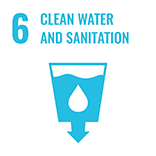Combining ecological and infrastructural restoration in Panchase Mountainous Region, Nepal

Summary
This solution is published as part of the project Ecosystem-based Adaptation; strengthening the evidence and informing policy, coordinated by IIED, IUCN and UN Environment WCMC.
The Panchase region is largely dependent on subsistence agriculture, and as such is particularly vulnerable to climate-related challenges. The ecological and infrastructural restoration undertaken in this project aimed to address both livelihood and ecosystem-based issues, using both scientific and traditional knowledge to target restoration activities effectively and appropriately: the use of organic farming techniques increased crop productivity and improved resilience to pest and disease; restoring ponds brought both ecological and social benefits by improving water quality and provision; and broom grass planting helped stabilise land, improve yields of farms close to roads by stabilising landslides, reducing soil erosion and maintain access to roads, as well as providing an additional livelihood source in itself.
Overview
- Location:
- Implementation sites:
- Single country
- Multiple locations
- Mountain region:
- Annapurna
- Province:
- Kaski district, Parbat district, Syangja district
- Site locations:
Panchase Mountainous Region
- Solution scale:
- Ecosystem type(s):
- Solution type(s):
- Sector(s):
- Climate impact(s) addressed:
- Impact time-scales:
- Co-benefits:
Solution details
Main beneficiaries & outcomes
Main beneficiaries
Beneficiaries are all people living around the Panchase region, especially women, poor and vulnerable households who are also members of home stay and community forest within Panchase.
Key outcomes
The adaptive capacity of communities in the ecologically sensitive mountain region of Panchase has been improved by restoring and conserving more than 60 community ponds and 45 water sources. This helps the community against flooding, drought, landslide and unreliable water provision. Water is now available during shorter dry periods.
More than 1000 households have improved their livestock sheds, allowing them to collect urine and farmyard manure, both of which help mitigate against impacts of drought as part of an integrated soil management scheme. This increased farm productivity and income, meaning overall vulnerability has been reduced.
Broom grass has been used as green infrastructure to restore hillsides and reduce risk of landslides, and helped protect roads, maintaining market access.
Pond restoration has improved water provision, maximizing water availability throughout the year, and minimizing the time that must be spent collecting water for farming and livestock.
By improving understanding of the applicability of EbA for climate-change planning, project success has helped to make the case for policy change which integrates EbA into Nepal’s national and local forest management.
Planning and implementation
Building block 1: Integrated on-farm soil nutrient management
This building block entails the use of animal dung and urine as organic soil nutrients for improving soil health and farm productivity. Integrated on-farm soil management comprises different elements, such as livestock shed improvement, urine collection and use, compost-making, improved compost pits, bio gas promotion, use of kitchen waste water, seed distribution, Farmer Field School, soil testing and treatment, and organic farming training and practice. Thus this building block allows for a holistic approach for addressing soil degradation, maintaining soil nutrient and moisture content, adapting to rainfall variability, and coping with increased pest and disease.
Building block 2: Community pond restoration
Community ponds in Panchase, located in forests and near settlements, are an example of important green infrastructure. Healthy ponds increase water infiltration by reducing water run-off, can reduce water-induced disasters like landslides, and can help with the storage of rainwater; rainwater storage is particularly important in this mountainous region as it helps protect agricultural land and downstream areas from erosion, flooding and landslides. It also helps ensure year-round availability of water. Restoration activities for this building block included water source protection, repair and maintenance of old ponds, and development of water supply arrangements.
First, IUCN helped communities to map ponds, after which some were prioritized based on extent of damage, potential for restoring groundwater, and level of dependency of surrounding communities. Locally available materials were used for repairs, to construct basic irrigation infrastructure, and to channel water from nearby sources to try to maintain water supply for as much of the year as possible. More than 60 community ponds were restored, covering three different sub-watersheds in Panchase.
Building block 3: Broom grass cultivation
Plantation of broom grass (thysanolaena maxima) was promoted at roadsides, barren areas and farmlands. Due to its strong web-like rooting system, broom grass helped prevent soil erosion, and stabilize slopes. Broom grass can regenerate quickly even in degraded land, and does not require much maintenance. It can be used to make brooms, the leaves can feed livestock, and the stems and roots provide fuel wood. As such, broom grass planting provides multiple livelihood opportunities, as well as ecosystem services.
Finance
The main donor of the EbA effectiveness project is the German Federal Ministry for Environment, Nature Conservation and Nuclear Safety (BMU) through its International Climate Initiative (IKI) to International Institute for Environment and Development (IIED) and IIED sponsoring to IUCN. The total project amount received by IUCN was 0.84m Euro and Nepal received 32,326 Euro.
The solution was captured from Mt. EbA flagship project activities.
Innovation
The solutions is innovative due to project implementation approaches, methodology, tools and activities. The main innovation method was the consideration of the restoration of ecology and infrastructure while implementing the EbA measures. Further innovations measures are as follows:
- The project follows EbA approach and activities are designed in a holistic manner
- The project linked the climate change adaptation with both people and ecosystem livelihoods enhancement;
- The project was implemented at a scale level (project site whole watershed) rather than implementing at a political boundary; and
- The project considers both adaptation and disaster risks reduction for the benefit of people and the ecology.
Long term project sustainability and maintenance
The plan for long-term project sustainability and maintenance the project further scaled up EbA activities in the area through capacity building, developing EbA champion, and mainstreaming into national to local level plans and policies from the year 2017- 2022. Furthermore, the EbA champions developed by the project are now elected as local government representatives and the project worked in collaboration with national and local governments who will continue the implementation of learning and best practices in the area and further scale up.
Similarly, IUCN has already received funding from GCF for seven years to scale up the learning and best practices of EbA in Gandaki River Basin area (further scale up of site from watershed scale to River basin scale).
Capacities for design and implementation
Knowledge
The knowledge and technology capacities are evolving with the passing of time and the key actor’s representatives are also changing with time. Therefore, the continuation of awareness raising and capacity building, knowledge management and shared learning, monitoring of initiatives, facilitation and mobilisation of key actors is needed for the project.
- Full solution on the PANORAMA website
- IIED: Ecosystem-based approaches to climate change adaptation
- International Union for Conservation of Nature (IUCN)





(0) Comments
There is no content